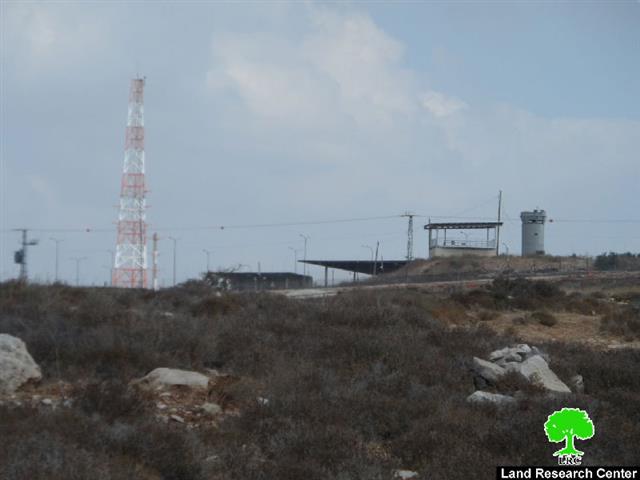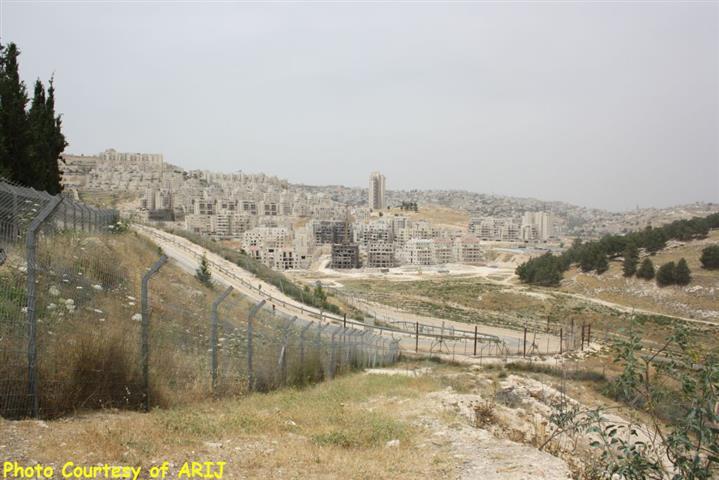Violation: Confiscation of thousands of agricultural dunums
Date: 25/08/2014
Location: Villages of Husan, Wad Fukin, Nahhalin, al-Jab’a in Bethlehem / Surif in Hebron
Perpetrators: The Israeli occupation army and Civil Administration
Pretext of the issuance of the order: A retaliation act for the abduction and murder of three Israelis near Etzion
Details:
The Israeli occupation authorities have revealed their intent to confiscate thousands of dunums that belong to Palestinian civilians in Surif town in Hebron and in the Bethlehem villages of Husan, Wadi Fukin , al-Jab’a, and Nahhalin.
The councils of the aforementioned villages have received a military order issued by Yossi Segal, who is in charge of state property and absentee property in the Israeli Civil Administration, under the title of “An Order about Government Property Number 59- 1967-” . Along with the order, maps that show the targeted lands are attached. The military order states that Israel will take over 3799 dunums of the five villages since they are “state property” as claimed.
The table gives information about the targeted lands in the villages by the last military order:
|
Village |
Area (dunums) |
|
Husan |
135 |
|
Wad Fukin |
1,145 |
|
Nahhalin |
185 |
|
Al-Jab’a |
1,575 |
|
Surif |
759 |
|
Total |
3,799 |
Source: Field Observations – Monitoring Israeli Human Rights Violations Team- LRC.
The orders also stated that owners of the targeted lands shown in the maps could file objections against the confiscation and present them to the objection committee of the military court in Ofer camp, near Ramalllah, within 54 days from the issuance of the order.
Photocopy of the military order issued on August 25, 2014:
On Sunday morning of July 31, 2014, people of Surif woke up to the noise of Israeli soldiers and officers of the Civil Administration setting up signs on their lands that read: “State Land” and “Do not trespass!”
Upon this sight, the people headed to the mayor of Surif Municipality, Mr. Mohammad Lafi, seeking an explanation only to be informed by an Israeli official that Israel was planning to seize lands for the sake of expanding Kfar Etzion and that came in revenge of the murder and abduction of three colonists in Hebron two months ago.
The Israeli soldiers were also setting up metal bars topped with yellow signs in Arabic and Hebrew stating that the land is Israel’s.
Part of the confiscated lands in Surif, Hebron
The confiscated lands differ in nature and use, as some are mountainous while others are plains; valleys; planted with olive trees that are centuries old; forests; planted with greenhouses and some are unused. The latter are often inaccessible, especially the pieces near Israeli colonies and/or the Apartheid Wall, and the Israeli occupation uses this fact as a pretext to declare them state land.
It should be marked that the order targets lands that are already under the de facto policy as the Israeli occupation, trying to create facts on the ground, has closed them and made them under full Israeli control. Same with the forests, west of the Separation Wall and the lands where al-Jab’a crossing is founded.
Al-Jab’a crossing on the horizon
Some of the land confiscated and secluded behind the Wall
About the damage the confiscation would entail on the people of Husan, Wad Fukin , Nahhalin, al-Jab’a, and Surif, here are some of the ramifications:
- Loss of vast areas of land that would rather be used by Palestinians for construction, agriculture, pastures, and public purposes. That would further limit the economic and civil development of the people of the mentioned places.
- Forcible transfer of the people whose homes are within the threatened areas.
- Damage of the agricultural wealth due to the confiscation of areas planted with olive, grains, and vegetables among others.
- Damage of animal wealth due to the confiscation of livestock pastures.
- Confiscation of water cisterns located within confiscated lands.
- Limitation of urban development that would take place on the lands.
Land Research Center (LRC) considers the order a flagrant violation of international laws and conventions, some of which are:
Article 1 of the International Covenant on Civil and Political Rights States:
“All peoples have the right of self-determination. By virtue of that right they freely determine their political status and freely pursue their economic, social and cultural development."
"All peoples may, for their own ends, freely dispose of their natural wealth and resources without prejudice to any obligations arising out of international economic co-operation, based upon the principle of mutual benefit, and international law. In no case may a people be deprived of its own means of subsistence."
Article 17 of the Universal Declaration of Human Rights stating: “Everyone has the right to own property alone as well as in association with others. No one shall be arbitrarily deprived of his property.”
Prepared by
The Land Research Center
LRC






















